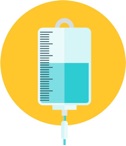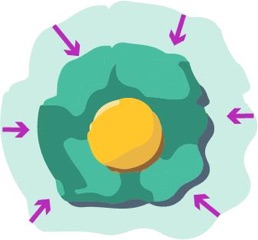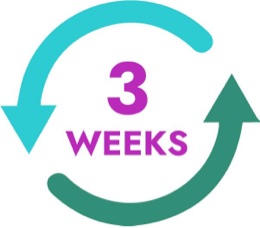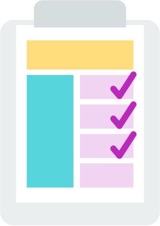 Non—High-Risk (Low- or Intermediate-Risk) Treatment
Non—High-Risk (Low- or Intermediate-Risk) Treatment
Non—High-Risk (Low- or Intermediate-Risk) Treatment
Treatment for non–high-risk (low- or intermediate-risk) neuroblastoma
Children with non–high-risk neuroblastoma have a low - or intermediate-risk classification. They make up about half of the newly diagnosed cases each year. This group has excellent event-free and overall survival with current therapy in clinical trials. Children with non–high-risk neuroblastoma generally have better treatment outcomes than those with high-risk neuroblastoma. Learn about the differences between non–high-risk and high-risk neuroblastoma classifications.
Recently, the goal for treatment of non–high-risk neuroblastoma has been to reduce the intensity of therapy to minimize short- and long-term side effects while continuing to maintain excellent outcomes.
Therapies depend on risk classification
The therapies used for your child’s non–high-risk neuroblastoma will depend on whether their neuroblastoma is low or intermediate risk.
Observation

Low risk only
Surgery

Low risk
Intermediate risk
Chemotherapy

Intermediate risk only
As your child’s treatment for non–high-risk neuroblastoma begins, the healthcare team will go over how and why each therapy is used. Below is an overview of treatment to help you and your family prepare.
Observation
Observation is sometimes referred to as watch and wait. The healthcare team monitors your child to see if the tumors disappear or start to grow.
For low-risk neuroblastoma
Observation is only used for low-risk neuroblastoma. In some cases with young infants who have low-risk neuroblastoma, the tumors will mature and go away on their own, and no treatment is necessary.
Surgery
Surgery is used to remove as much of your child’s tumor as possible. Removal of the tumor is also known as resection.
- In some cases, a complete removal of the tumor is possible and the surgery may be the only treatment your child requires
- Only a partial removal of the tumor is possible if your child’s tumor is near vital structures or wrapped around large blood vessels
 Surgery is used to remove as much of your child’s tumor as possible.
Surgery is used to remove as much of your child’s tumor as possible.
For low-risk neuroblastoma
Surgery is often the only treatment needed. If the entire tumor is not able to be removed, oncologists will monitor it closely and then determine whether additional therapy is necessary.
For intermediate-risk neuroblastoma
Surgery will be used after chemotherapy to remove as much of the tumor as possible.
 Chemotherapy for children with neuroblastoma can be used before surgery (neoadjuvant chemotherapy) or after
surgery (adjuvant chemotherapy).
Chemotherapy for children with neuroblastoma can be used before surgery (neoadjuvant chemotherapy) or after
surgery (adjuvant chemotherapy).
Chemotherapy
Chemotherapy for children with neuroblastoma can be used before surgery ( neoadjuvant chemotherapy) or after surgery ( adjuvant chemotherapy). Chemotherapy medicines will stop cancer cells from growing, either by killing the cells or by stopping them from dividing and reproducing.
For intermediate-risk neuroblastoma
Children may have tumors that have unfavorable characteristics or are not easy to remove with surgery alone. In this case, your child’s healthcare team will start chemotherapy to treat the neuroblastoma. Generally, you can expect the following with chemotherapy.
The number of chemotherapy cycles your child needs depends on how much the tumor shrinks (responds to chemotherapy).
Most often your child will be given more than one chemotherapy medicine. This is known as combination chemotherapy. It is often given in a clinic or an outpatient setting (not in the hospital).
The most common chemotherapy drugs used in non–high-risk neuroblastoma treatment are:
- Carboplatin
- Etoposide
- Cyclophosphamide
- Doxorubicin
It is important to ask your child’s healthcare team about the chemotherapy regimen that will be specifically tailored for your child. Side effects from chemotherapy differ from medicine to medicine. Knowing which medicines will be used can help you understand what treatment side effects to expect.
Many of the physical changes or side effects due to chemotherapy are not permanent. It is okay to rely on your child’s healthcare team to figure out how to help manage the side effects, and to talk to your child about some of the changes. Learn more about how to help manage side effects and about supportive care for your child during chemotherapy.




